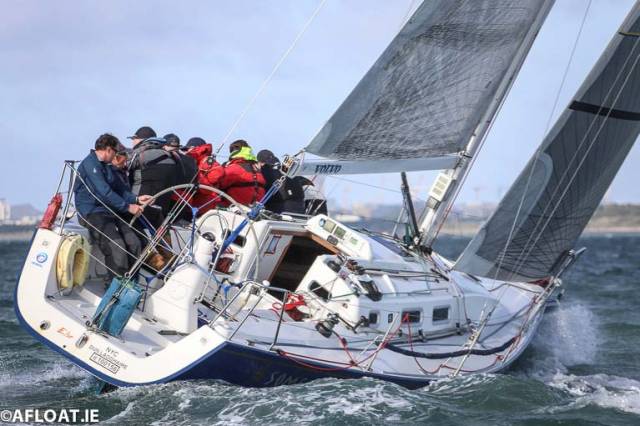The pit or “strings” is a vital role aboard any boat; but not just mechanically, explains Barry Hayes of UK Sailmakers Ireland. A good pit person is involved in everything. Every sail manoeuvre, the start, on the rail, aiding communication and keeping the plan cohesive from front to back. Although often overlooked; it is actually one of the most important roles on the boat.
Many of us over our time sailing have done the pit and experience the pressure points of the role. Here are some tips to make your life easier and help the pit team, and boat, run like clockwork.
1. Main Halyard
Tie the main halyard back on to the clutch. We’ve all seen it. There is a high-pressure drop and in the rush, the wrong clutch is opened. This can easily happen if the halyard isn’t marked and it’s your first time on the boat. Tie it off good and tight so it’s never opened unless its meant to be.
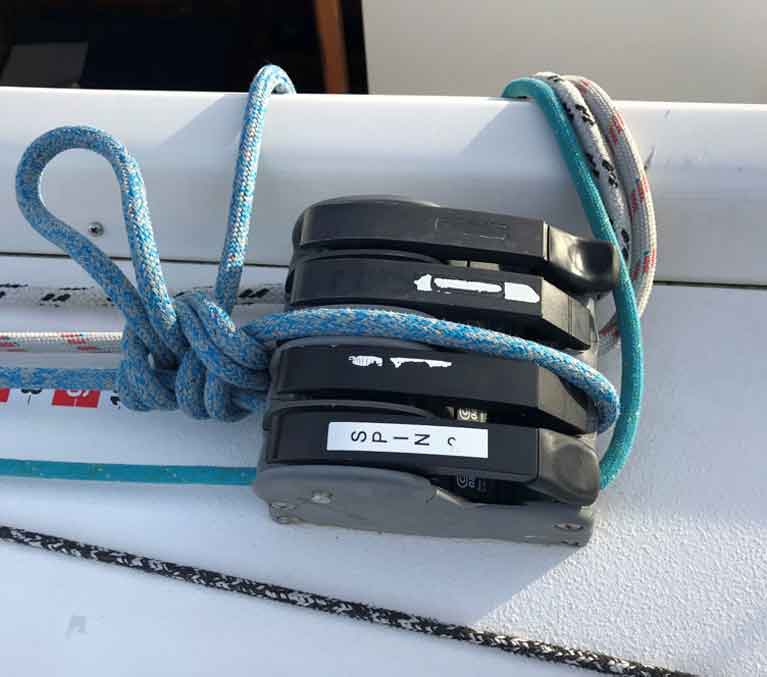 Main halyard tied off
Main halyard tied off
2. Hatch Halyard Bag
Build a long halyard bags for the jib and spinnaker halyards. Two long pockets with wide openings. Each halyard goes into its own pocket so it never gets messed up / stood on / tangled or knotted. It also keeps the rope out of everyone’s way. I normally make them out of mesh.
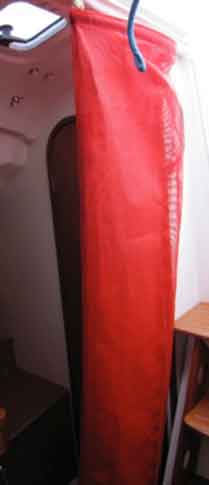 Hatch Halyard bag
Hatch Halyard bag
3. Halyard Organiser
Add a Harken 56 mm crossover block to your pit setup. This allows you to take a halyard across to the opposite side winch and grind it up, under load, without any issues. This handy little tool saves time and space.
4. Hobbles
Use hobbles to your jib sheets. This frees up your genoa winches for bear away sets and drops. You can use the kite sheets on the genoa winch while having the genoa eased on the hobble for a hoist or drop. This gives you loads of time to load a sheet onto the winch. Simply put some spectra lashing through the genoa sheet about 1ft in front of the turning block. Spice a spectra strop about 2 feet longer than that point as per the photo. The jib can be eased out onto the hobble for the bear away, leaving the winch free for the kite sheet.
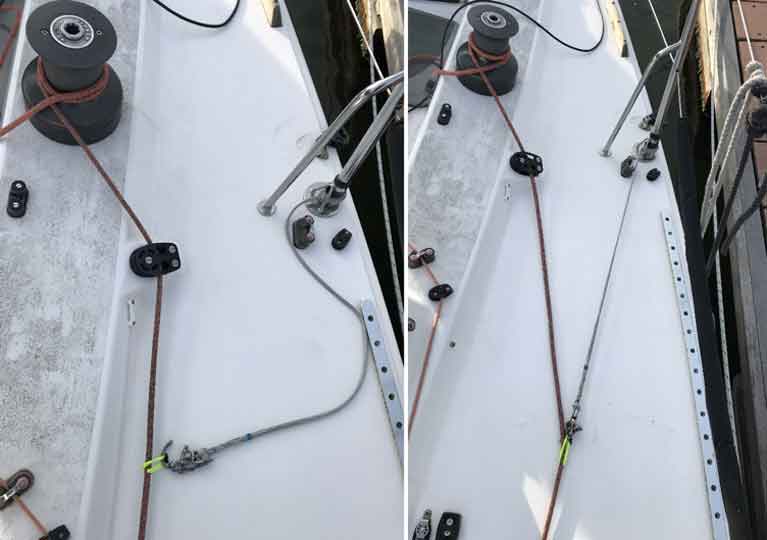 Jib sheet hobbles
Jib sheet hobbles
5. Fraculator
This is a simple tool to help the pit to be ready to hoist the jib at a moments notice. A fraculator allows you to keep the jib halyard under load, both pulling the rig forward and keeping the halyard tight to the forestay, removing any chance of the kite wrapping inside it on a gybe. Once you unclip the fraculator the jib is ready to hoist. A fraculator is normally a 1.2 / 1.4 m strop with a snap shackle, tied to the base of the forestay.
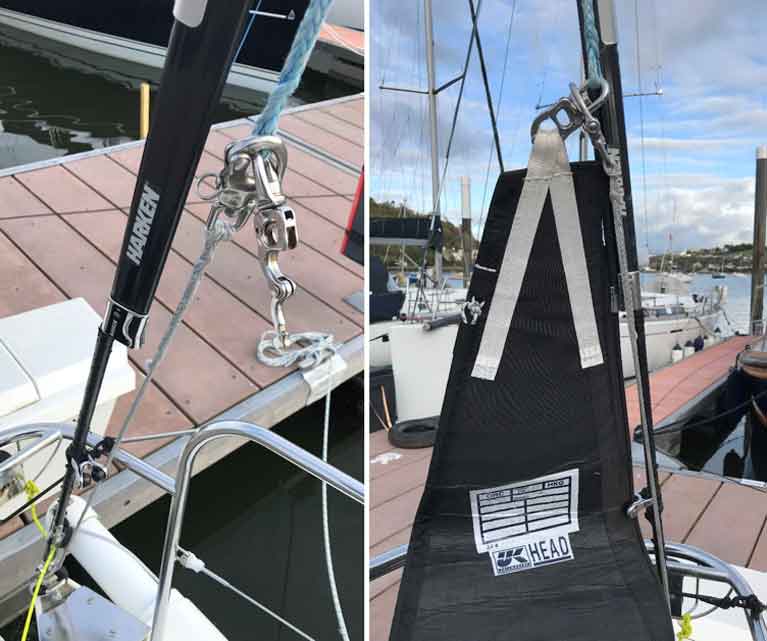 Fraculator
Fraculator
6. Spinnaker Sheets
If you use your top winches to trim the kite you can find yourself rushing to strip the winch and get the sheet loaded at the windward mark before the spinnaker hoist. Instead, loop the kite sheet loosely around the winch before loading up the genoa halyard for upwind sailing. That way it is ready for action when you drop the jib. The trimmer simply takes up the slack as you drop the genoa halyard off the winch.

7. Headsail Mark
Instead of having a mark on the jib halyard, put a mark on the headsail foil and a corresponding mark on the luff of the jib. So you can set the halyard to the correct tension no matter which headsail you have up. As the luff length change the so does the marks on your halyard so having a mark on the foil and the headsail maker the luff tension perfect every time.
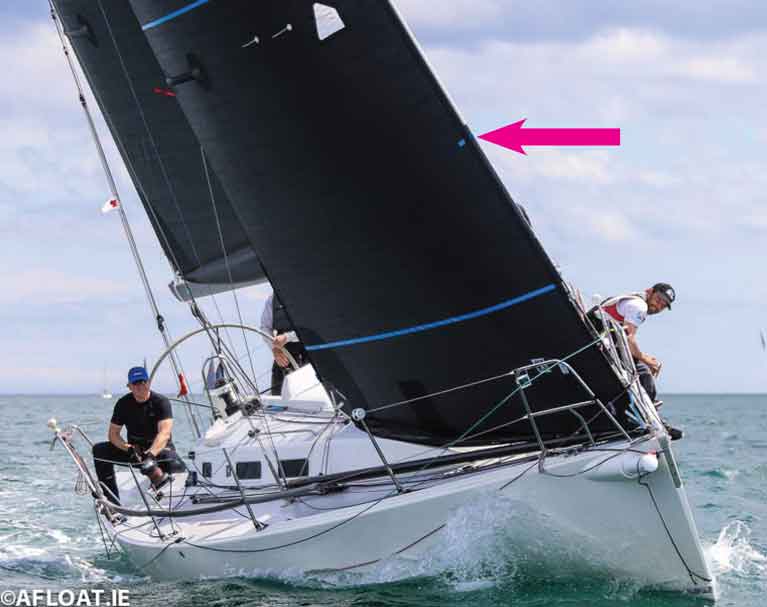 Headsail Mark
Headsail Mark
8. Work With Your Mast Man. Not Against Him
Keep an eye on your mast man at all time. He is the key to your operations. Make sure your arm pulls are the same speed and length as his. You must keep the halyard flow going at a good even speed so the halyard doesn’t get jammed in the block. When hoisting you don’t need a winch to keep up with your mast man. The winch slows down the speed of the hoist. Just pull it from the back side of the clutch.
9. Code Zero
When dropping the code zero the bow man should be bringing it down to windward. Ease the halyard a little when dropping. But just 2 feet. So he can swing the sail over the forestay and get it under control. It makes the drop 100 times easier. Always leave the code zero halyard on the winch. as the clutch is not designed to take the load.
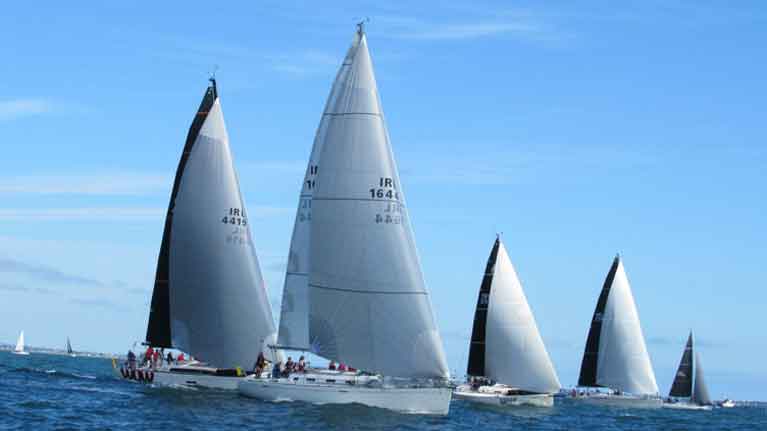
10. Halyard Drops
When dropping the kite you need to depower the sail quickly. The best way to do this, when the crew are ready, is to drop ¼ of the halyard. I normally have a blue mark on it so I know the point. Just open the clutch, fire the halyard and close it again when the mark comes to the clutch. I never use a winch to drop the halyard as it slows down the process.
11. Communicate from Start to Finish
Keep the commutation flow in the pit throughout the start sequence and beyond. Call the time for the crew and help with the calls on boats which may not be visible to the helm. Make sure to ping the start boat and pin end with your starting instruments. You’re the key to the team working well and the flow in the boat. The pit is the best link between the back of the boat thinking and the front of the boat reality. You have to play in both fields and keep the communication going. Listen to tactical calls from the back while feeding useful information back from the rail. Relay potential hoists, drops, sail changes etc to the bow team so they can prepare for any eventuality. Be clear and concise. Communicate with the team and do the best you can to help everyone do their jobs.



























